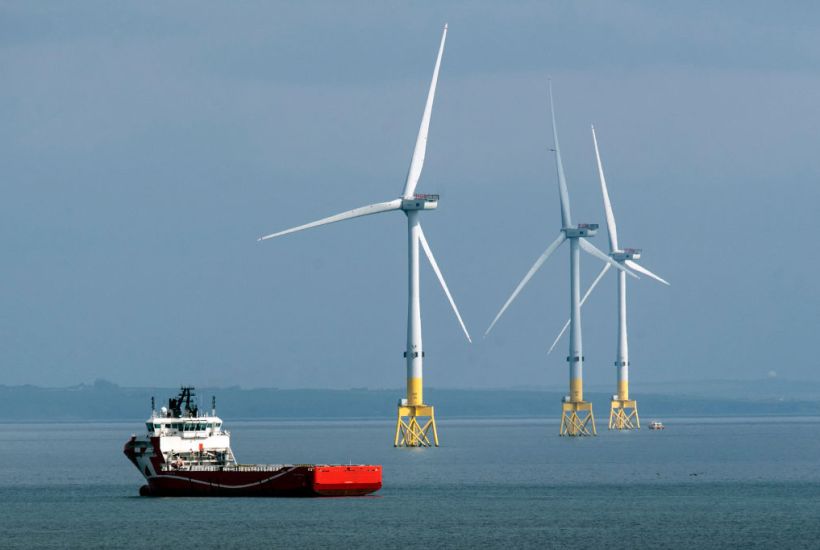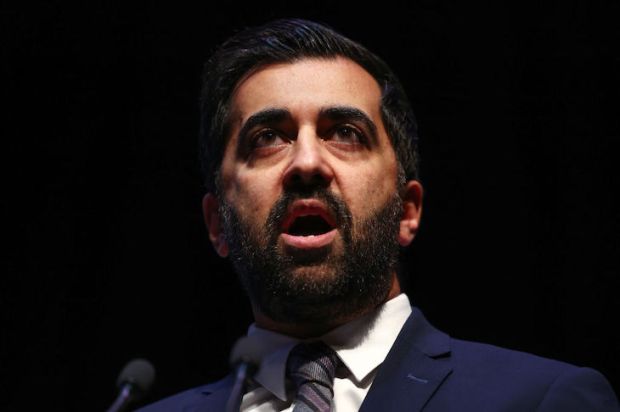SNP MP Stephen Flynn was emphatic when he used a certain statistic in Parliament last month: ‘Scotland’s potential in this regard is huge – absolutely enormous… We have 25 per cent of Europe’s offshore wind capacity – 25 per cent!’ he told his audience. It is not the first time Flynn has used the statistic, and neither is he the only SNP MP, or MSP, to use it.
‘With more than 25 per cent of Europe’s capacity in wind energy, Scotland is set to become a massive producer and exporter of renewable energy,’ wrote Angus Robertson MSP, the SNP’s External Affairs and Culture Secretary at Holyrood, in a newspaper column in January. And just a few weeks ago he tweeted: ‘With 25 per cent of Europe’s renewable wind potential Scotland is well placed to be a major hydrogen exporter to the rest of Europe.’
In March, the 25 per cent figure was cited in the Scottish government’s National Strategy for Economic Transformation paper. In 2013 it featured prominently in the Alex Salmond-led Scottish government’s official manifesto for independence. Nicola Sturgeon used it in a speech in 2017.
The statistic is everywhere. It appears frequently in the media, gets quoted by journalists and is often cited by business people and trade organisations. At the time of writing, it features on the webpage of Scottish Renewables, the trade organisation for Scotland’s renewable energy industry.
There is just one problem with the number: it is bogus. Incredibly, a key piece of data trotted out repeatedly by SNP politicians and used often in official Scottish government publications has turned out to be a cleverly contrived falsehood. An investigation by Sam Taylor at These Islands on the provenance of the number has unearthed a remarkable story of misinformation.
Incredibly, a key piece of data trotted out repeatedly by SNP politicians has turned out to be a cleverly contrived falsehood.
The statistic first appeared in an official Scottish government report in 2010, although Alex Salmond had been pushing different versions of it since at least 2006. Using Freedom of Information (FOI) requests, and then subsequently tracking down reports cited in them, Taylor was able to recreate the number in the way Scottish government officials formulated it. He found that the 25 per cent figure was calculated by cherry picking, and then combining, incompatible statistics, while using inconsistent constraint assumptions from two outdated reports. One of these was a 1993 study that used a definition of Europe that included only 11 countries – and which therefore left out renewable powerhouses like Norway.
Perhaps more shocking than how the number was originated and used is the fact that the FOI responses also showed Scottish government officials have known for years that the figure cannot be justified. ‘Whilst the 25 per cent figure has been used in the past, we tend not to use this anymore. It has proved very difficult to source,’ one government official noted internally in October 2020. Another said in January last year that ‘we did recycle those figures quite robotically without really checking them’. Yet the figure continued to be used in Scottish government publications.
It is not difficult to see why the statistic has become a leitmotif for the SNP. A single, easy-to-understand piece of information that encapsulates the hope of a richer future for a nation blessed with renewable resources just waiting to be exploited. Link that to the argument for independence and you’re onto a winner.
When contacted by newspapers to respond to Sam Taylor’s findings, a Scottish government spokesperson admitted the figure was wrong, and that it needed updating. However, the spokesperson also claimed the figure was correct when first officially used in 2010. But even this is a falsehood, as Taylor’s investigation shows the figure was also demonstrably incorrect when the Scottish executive first published it at that point. Taylor points to more up-to-date industry analysis that suggests a reasonable estimate would be 4 to 6 per cent.
But why does any of this matter? The SNP remains under the delusion there will be another referendum on secession next year. Central to its case is Scotland’s renewables potential – which they have been shown to have spun into an immense untruth.
The super-charged bullet of propaganda that is the 25 per cent figure was not merely formulated to get one over on opponents at Westminster or Holyrood, it was designed to mislead the people of Scotland, who will surely be wondering what other mistruths have been deployed for the sake of ‘the cause’.
The SNP leadership likes to believe their party is the natural embodiment of the thoughts and instincts of the Scottish people – that the party has an almost spiritual-like connection to the nation, and so by default the strongest bonds of trust with its inhabitants. This episode shatters that illusion. In its willingness to deceive the Scottish people, the SNP displays the very disdain for the nation it so often projects onto its opponents.
A re-writing of the record in favour of truth is now needed. Questions must be asked of the civil service. The people of Scotland deserve better than to be taken for fools.
The post The SNP’s misinformation campaign on Scottish renewables appeared first on The Spectator.
Got something to add? Join the discussion and comment below.
Get 10 issues for just $10
Subscribe to The Spectator Australia today for the next 10 magazine issues, plus full online access, for just $10.




















Comments
Don't miss out
Join the conversation with other Spectator Australia readers. Subscribe to leave a comment.
SUBSCRIBEAlready a subscriber? Log in